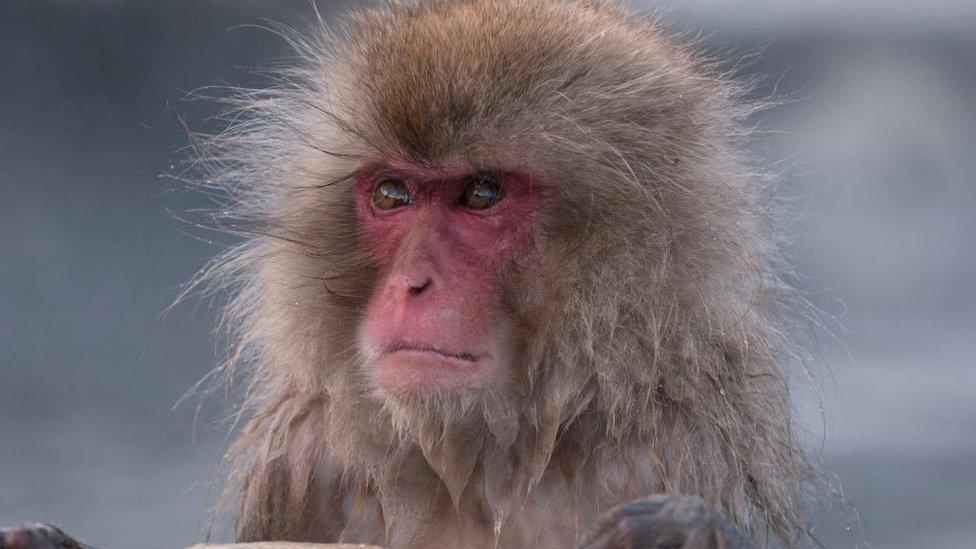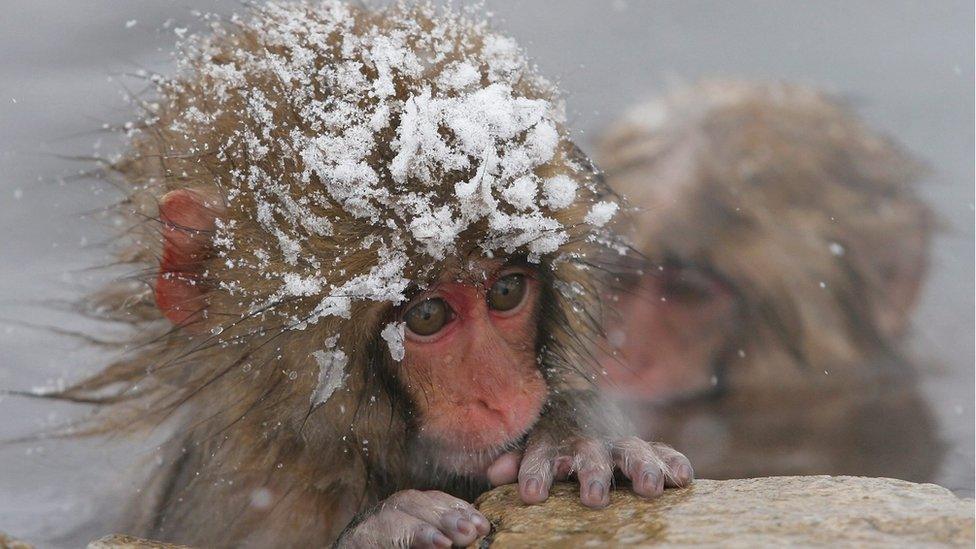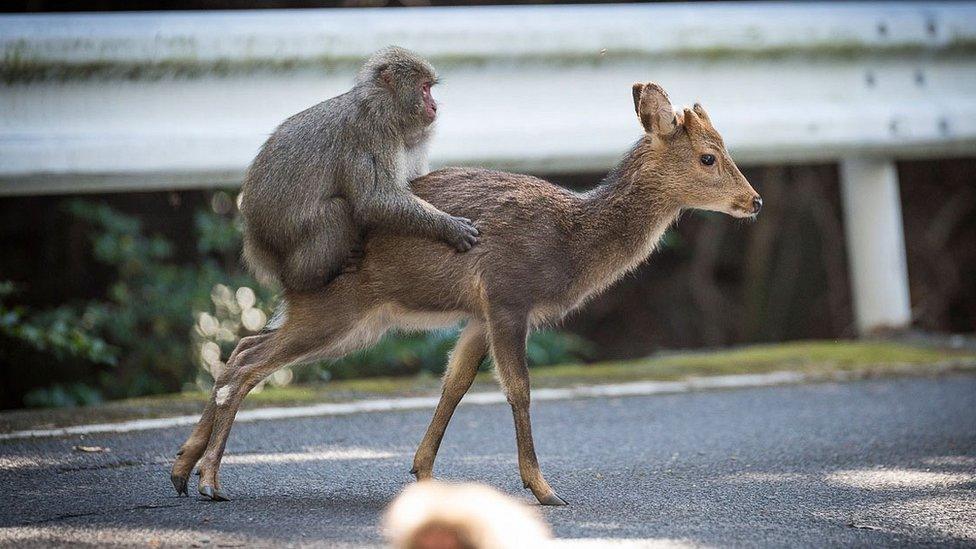Japan's police to take measures after wild monkey rampages
- Published

Authorities are still figuring out if one rogue animal or a gang of perpetrators are behind the attacks.
Japanese police are turning to tranquiliser guns in an attempt to stem the tide of wild monkey attacks that have been terrorising residents.
In recent weeks, 42 people have been reported injured in Yamaguchi city - including children and the elderly.
The attacks are being blamed on Japanese macaques.
However, while they are a common sight in large parts of the country, incidents like these are unusual.
"It's rare to see this many attacks in a short period of time," said one city official, declining to give their name. "Initially only children and women were attacked. Recently elderly people and adult men have been targeted too."
Attempts to capture the animals with traps ended in failure and police patrols implemented since the first attack in early July have failed to deter the culprits.
Authorities are also unsure if the assaults are the work of a single rogue monkey or several.
Injuries have varied, with local media reporting victims have received anything from scratches, bitten legs and hands, to bitten necks and stomachs.
Stories include a four-year-old girl scratched during an apartment break-in, while in another instance a monkey breached a kindergarten classroom.
Some residents have reported multiple incursions in their homes as the primates gain access by sliding screen doors or entering through open windows.
"I heard crying coming from the ground floor, so I hurried down," one father told Japanese press. "Then I saw a monkey hunching over my child."
Once a vulnerable species, Japanese macaque numbers have recently increased. They are now listed by the International Union for Conservation of Nature as a species of "Least Concern, external".
However their recovery has "triggered serious conflicts between people and the macaques", according to research , externalfrom Yamagata University.
A decrease in distance between humans and macaques is blamed by the study. Shifting cultural attitudes towards macaques, changes in human behaviour and changes in forest environments are given as possible reasons why.
- Published4 April 2018

- Published21 February 2017

- Published10 January 2017

- Published6 May 2015
